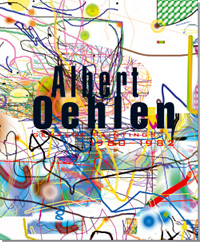 |
||
|
||
Albert
Oehlen: German / English out of print
|
The beginning of his career as a painter coincides with the Renaissance of this medium in the early Eighties. And yet it would be short-sighted to view Albert Oehlen simply as a part of this movement. In retrospect, the selection of 19 early works focuses upon Oehlen’s postulate of using painting as an exemplary space of free play. Painting is for him the place from which one can proceed to conduct all possible sorts of investigations. The procedure of painting and its language he regards as trial dispositions for general questions of representation and of the formal establishment of meaning in art. How this looked in the beginning is described by the art critic Martin Prinzhorn in an essay which sets the works of the Eighties in the context of art history. He pursues the question of abstraction which Oehlen freshly formulates in works seeming from a superficial viewpoint to be narrative in nature and which leads him to coin the term “post-non-object-oriented.” In his contribution entitled “To Claim That Things May Be Done Differently,” Stephan Schmidt-Wulffen investigates the provocative impulse which belongs without a doubt to the works of Albert Oehlen: beginning with the intentional effort to paint badly, through the inclusion of taboo motifs such as the portrait of Hitler all the way to the violation of rules in the act of painting itself—the combination of oil- and water-based paint, which is intended to serve as a self-created “obstacle” and to sabotage spontaneity and expression. A playful quality and an utter lack of respect in handling the “traditional” medium of painting throws these early works in particular into relief and sharpens our awareness of the art of the Eighties, which still awaits a differentiated evaluation. This present volume represents a beginning in this endeavor!
... |
|